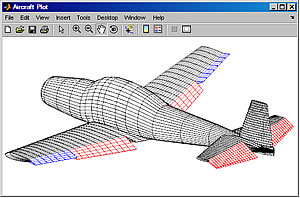Fundamentals of
Designing :
 |
| The principles of Beginning Graphic Design | Fundamentals of Designing |
Concept of 2D&
3D Graphics
In the 2D system, we use only two coordinates X and Y but in 3D, an extra coordinate Z is
added. 3D graphics techniques and their application are fundamental to the
entertainment, games, and computer-aided design industries. It is a continuing
area of research in scientific visualization.
2D Graphics
Raster graphics also called bitmap graphics,
a type of digital image that uses tiny rectangular pixels,
or picture elements, arranged in a grid formation to represent an image.
Because the format can support a wide range of colors and depict subtly
graduated tones, it is well-suited for displaying continuous-tone images such
as photographs or shaded drawings, along with other detailed images.
2D graphics
models may combine geometric models (also called vector graphics), digital
images (also called raster graphics), text to be typeset (defined by content,
font style and size, color, position, and orientation), mathematical functions
and equations, and more. These components can be modified and manipulated by
two-dimensional geometric transformations such as translation, rotation,
scaling. In object-oriented graphics, the image is described indirectly by an
object endowed with a self-rendering method—a procedure which assigns colors to
the image pixels by an arbitrary algorithm.
Two-dimensional
facial animation is commonly based upon the transformation of images, including
both images from still photography and sequences of video. Image morphing is a technique that allows in-between transitional images to be generated between a
pair of the target still images or between frames from sequences of video.
In many
domains, such as desktop publishing, engineering, and business, a description
of a document based on 2D computer graphics techniques can be much smaller than
the corresponding digital image. This representation is also more flexible
since it can be rendered at different resolutions to suit different output
devices.
2D:
- 2D is used to create flat digital images.
- X and Y horizontal and vertical axis are used in 2D.
- 2D graphics are used for printing and drawing applications.
- 2D graphics are vector-based graphics.
- 2D is used to create flat digital images.
- X and Y horizontal and vertical axis are used in 2D.
- 2D graphics are used for printing and drawing applications.
- 2D graphics are vector-based graphics.
3D Graphics
Three-dimensional computer graphics
are graphics that use a three-dimensional representation of geometric data.3D computer graphics are works of
graphic art that were created with the aid of digital computers and specialized
3D software.
3D computer
graphics are often referred to as 3D
models. Apart from the rendered graphic, the model is contained within
the graphical data file. However, there are differences: a 3D model is the
mathematical representation of any 3D
object.
3D:
- 3D graphics represent 3-dimensional representations of geometric data, such as length, breadth, and depth.
- 3D graphics fall into 3 categories:
1. 3D modeling – the process of forming the computer model of an object.
2. Layout and Animation – movement and placing and object in a scene are known as layout and animation.
3. 3D rendering – computer calculations that are based on light placement, surface types generate an image.
- 3D graphics represent 3-dimensional representations of geometric data, such as length, breadth, and depth.
- 3D graphics fall into 3 categories:
1. 3D modeling – the process of forming the computer model of an object.
2. Layout and Animation – movement and placing and object in a scene are known as layout and animation.
3. 3D rendering – computer calculations that are based on light placement, surface types generate an image.
At their most basic levels, 2D and 3D graphics are very
similar. For the most part, objects are moved around by affine transformations.
Colors are applied based on rules that we come up with however we like.
Collisions are calculated with bounding volume hierarchies. There are a few
significant ways in which 3D graphics are more complex than 2D graphics.
- Perspective
2D graphics come from 2D scenes mapped to a 2D screen, so
very little has to be done to make the scene human-understandable. 3D scenes
don't work as easily because we can't make a 2D screen display 3D data without
a loss of information. Choosing which pieces of information to lose is
difficult.
We could take a cross-section of the scene, but then we lose
the ability to see both far-away things and close up things. We could project
everything directly onto the screen by pretending everything is at the same
depth (orthographic projection), but this makes a cat 10 miles away look the
same as one at your feet. Most of the time, we work with perspective
transformations, which act like the human eye by making things seem smaller and
smaller as they get further away.
This property of 3D scenes means we have to be very careful
with scale, and the parameters of our virtual camera to make sure we have
exactly what we want in our scene.
2. Shading models
In true 2D, we often just assign colors to objects in the
scene. Like a cartoon, objects shaded in this way do not respond realistically
to changes in lighting. In 2D this does not bother us, because we already have
some suspension of disbelief working in a smaller space.
In 3D, the cartoony look can be neat, but it generally looks
unpleasantly flat and dull. Even for cartoony videogames like The Legend of
Zelda: Wind Walker, there is a lot of computation done to determine how dark or
light something will be based on lighting conditions. This requires about as
much computation as the realistic style seen in games like Halo: Combat
Evolved.
Shading models consider the effects of orientation,
position, and color of both lights and objects to make objects look realistic.
Some nice properties are: the object is darker when facing slightly away from
the light than it is facing it directly, lights don't illuminate occluded
objects, further away lights, blue light makes blue things bright but doesn't
affect orange things much.
The way in which the colors of objects are calculated
differs between movies and, games, but they follow the same general principles,
and these principles are not often used in 2.
3. Optics
What does a mirror show you in 2D? I'd guess nothing at all.
Any mirror you could see in 2D is facing out of the scene, so you're not likely
to see the characters reflected in it. If it's at 45 degrees, maybe it shows
you some of the scene, but in 2D, this is something artists have drawn, not
something the machine has computed.
Mirrors, glass, black holes, water, metals, glazed ceramics,
butterfly wings and many other materials have more than a diffuse color. They
have transparency, specular reflectance, indices of refraction (which leads to
lensing), gravity (which leads to a different kind of lensing), interference,
and many other optical properties. These affect not just how things look, but
also what you can see, and how much of the scene the computer has to look at
before painting the screen.
4. The curse of high dimensions
Unfortunately, the cost of doing things in 3D is quite high.
Not only do we work with more complex models in 3D, but even our simple ones
simply take longer to compute. This means that every frame in a 3D scene takes
a lot longer to draw than it would in a 2D scene. This is why a lot of older
games like StarCraft used 2D graphics even though 3D graphics were available at
the time. The 3D graphics were too slow for the computers of the time.
These days, computers are exponentially faster, and many
things that were not possible to do at 60fps now are. The work isn't over yet
though. The reason games like Sky rim don't look photorealistic isn't that we
don't know how to replicate reality. It's that replicating reality takes a few
days to render each frame.
Points
A point is a
coordinate without any dimensions, without any area. Points are the simplest
element of visual design. By definition, we can’t actually draw a point, since
to see one would require it has dimensions.What we can draw is a dot. In fact, dots are the building blocks of everything else. Any other mark we make can be seen as one or more dots in combination. Every shape, form, mass, or blob with a recognizable center is essentially a dot regardless of its size.
Dots establish a relationship with the space around it. The two most important relationships formed are the proportion of the dot and space around it and the position of the dot within that space.
As dots increase in size we start to see them as shapes, but they still retain their fundamental dot-like qualities and characteristics.
Lines
The fundamental characteristic of a line is to connect or unite. This connection can be visible or invisible.
Where dots are about the position, lines are about movement and direction. A line leads somewhere, your eye moves along it seeking one or both of its endpoints. This movement and direction make lines inherently dynamic The flip side of connecting is separating. Lines not only connect elements, but they can also separate elements. As lines become thicker they begin to be perceived as planes or surfaces and they gain mass. To maintain their identity as lines they must increase in length as they increase in width







2 Comments
NewBlueFX TotalFX Crack Over 1,500 presets in 177 effects are available. Plugins for video editing, transitions, filters, and title tools are included.
ReplyDeleteNewbluefx Totalfx Crack
CleanMyPC Crack
DriverFinder Crack
55CDF16608
ReplyDeletegüvenilir takipçi
accent chair swivel